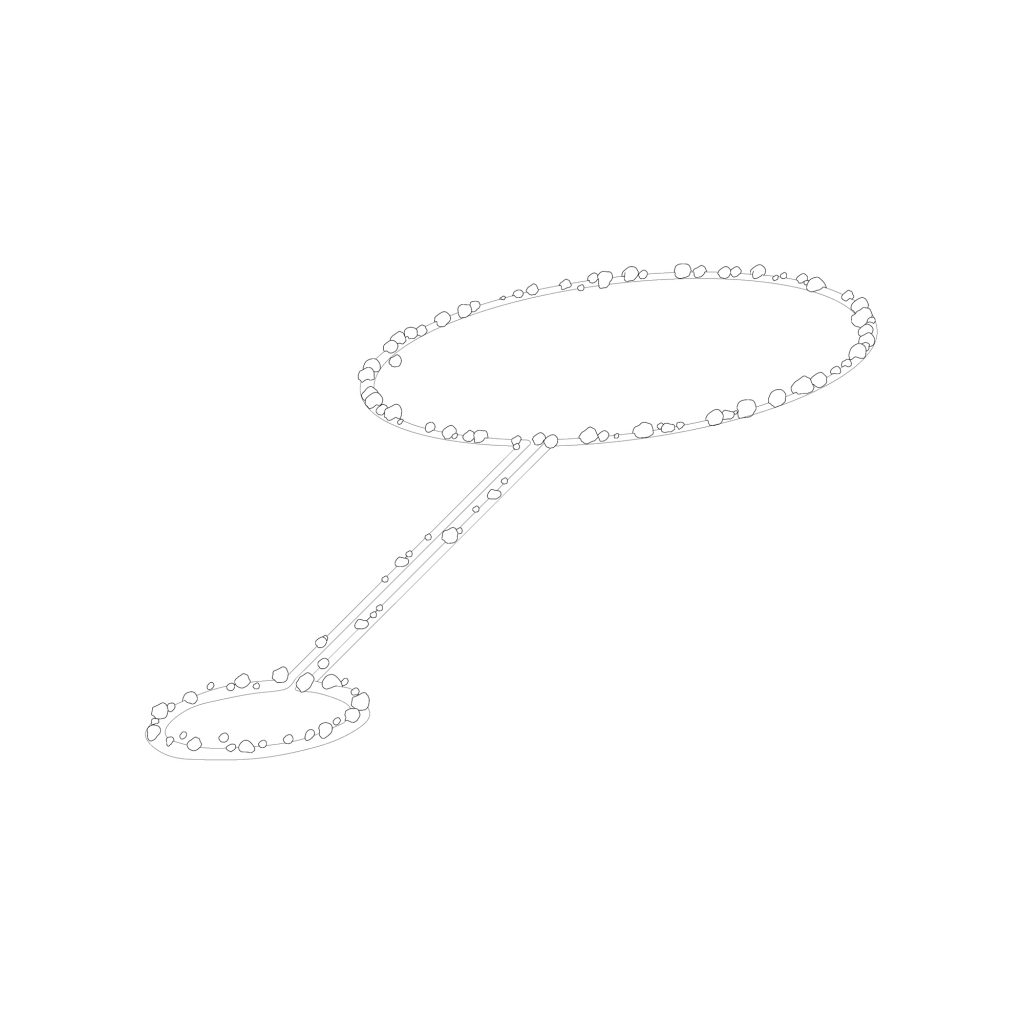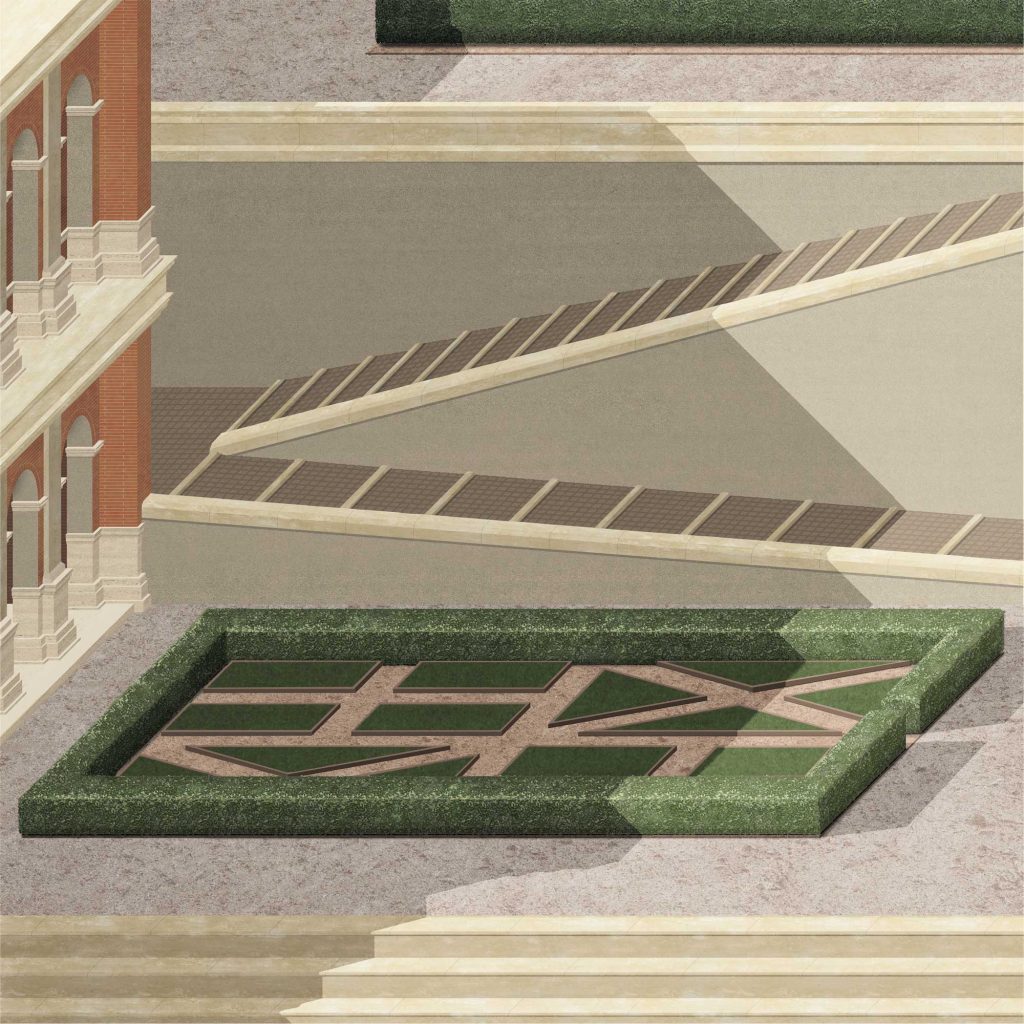This study revisits the platform as a physical support by studying it as a specific architecture. The platform is not just a way of raising buildings or people from the ground, but also an architectural form that redefines and negotiates the way in which the ground is made habitable.
Este estudio revisa la plataforma como soporte físico estudiándola como una arquitectura específica. La plataforma no es solo una forma de levantar edificios o personas del suelo, sino también una forma arquitectónica que redefine y negocia la forma en que se habita dicho suelo.
Humans had leveled the ground as the most primary form of inhabitation before sedentary life even began, and today, the entirety of the urban world is made of platforms that either enable or restrict the use of the ground. The use of the platform as an architectural element is common to many civilizations – from Aboriginal Australia to Mesoamerica to Ancient Greece to Islamic culture – and yet very little has been written about it. Our research therefore departs from the only significant text written on this archetype: ‘Platforms and Plateaus’ (1959), by the Danish architect Jørn Utzon. We aim to expand and problematise Utzon’s appraisal of the platforms as an architectural idea towards a critical enquiry into this archetype. Though often understood as a symbol of power, the platform has also existed as gathering place, a point of both orientation and exchange among communities.
Los seres humanos han nivelado el suelo como la forma más primaria de habitar antes incluso de comenzar el sedentarismo, y hoy en día, la totalidad del mundo urbano está hecho de plataformas que permiten o restringen el uso del suelo. El uso de la plataforma como elemento arquitectónico es común en muchas civilizaciones, desde la Australia aborigen hasta Mesoamérica, la Grecia antigua y la cultura islámica, y sin embargo, se ha escrito muy poco sobre él. Por lo tanto, nuestra investigación comienzo con del único texto significativo escrito sobre este arquetipo: ‘Plataformas y mesetas’ (1959), del arquitecto danés Jørn Utzon. Nuestro objetivo es ampliar y problematizar la evaluación de Utzon de las plataformas como una idea arquitectónica hacia una investigación crítica de este arquetipo. Aunque a menudo se entiende como un símbolo de poder, la plataforma también ha existido como lugar de reunión, un punto de orientación e intercambio entre comunidades.

The term ‘platform’ has a fundamentally political nature. Since the 19th Century it has been used extensively outside the field of architecture, firstly within parliamentary politics to refer to party policies and institutions, and more recently in the digital realm to address large internet corporations that mediate interactions between groups of users. Like their physical counterparts, both political and digital platforms refer to spaces taht at once facilitate and condition use. The platform therefore embodies the quintessential meaning of institutional power since, like institutions, such structures are apparatuses of social order, their functions based on the stability of recurring patterns of behavior. Our goal is to revisit the platform as specific architectural archetype that assumes the ‘ground’ not to be a ‘natural’ given, but rather a political construct.
El término ‘plataforma’ tiene un carácter fundamentalmente político. Desde el siglo XIX se ha utilizado ampliamente fuera del campo de la arquitectura, primero dentro de la política parlamentaria para referirse a las políticas e instituciones de los partidos, y más recientemente en el ámbito digital para dirigirse a las grandes corporaciones de Internet. que median las interacciones entre grupos de usuarios. Al igual que sus contrapartes físicas, tanto las plataformas políticas como las digitales se refieren a espacios que a la vez facilitan y condicionan el uso. La plataforma, por lo tanto, encarna el significado por excelencia del poder institucional ya que, al igual que las instituciones, dichas estructuras son aparatos de orden, sus funciones basadas en la estabilidad de patrones recurrentes de comportamiento. Nuestro objetivo es volver a visitar la plataforma como arquetipo arquitectónico específico que asume que el “fondo” no es un dato “natural”, sino más bien una construcción política.
Text and images via Dogma
Full text in English at E-flux











